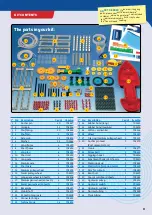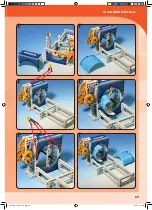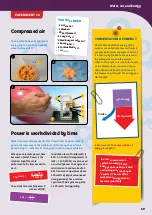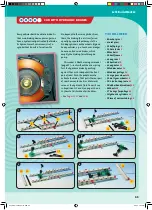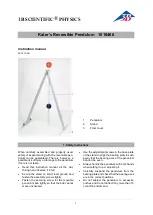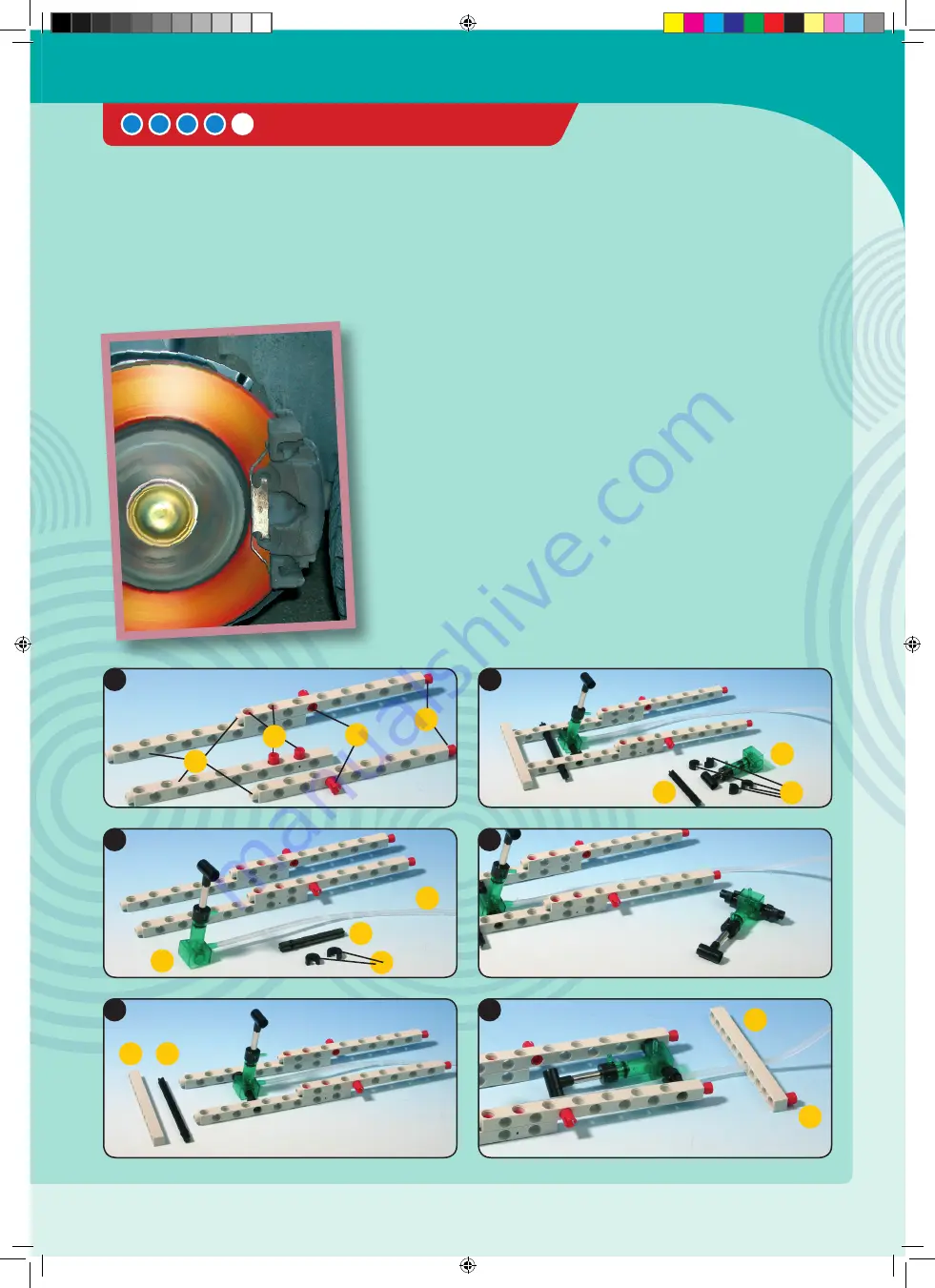
CAR WITH HYDRAULIC BRAKES
Every vehicle should be able to brake. As
their main braking device, passenger cars
have a hydraulically activated foot brake.
Its hydraulic mechanism consists of a
cylinder that transfers force from the
YOU WILL NEED
›
8 Anchor pins
1
›
4 Joint pins
2
›
2 Shaft plugs
3
›
10 Axle locks
5
›
8 Washers
6
›
1 Short frame
8
›
4 Long rods
9
›
6 Short rods
10
›
4 Long axles
11
›
3 Medium axles
12
›
2 Medium pulleys
14
›
2 Large gear wheels
16
›
2 Small gear wheels
18
›
1 XL (extra long) axle
21
›
1 Rubber band (medium)
25
›
2 Wheels
28
›
2 Tire rings for pulleys
29
›
2 Hydraulic cylinders
42
›
1 Piece of narrow tubing
43
brake pedal to the main cylinder. From
there, the braking force is transferred
equally by separate pathways to the
braking cylinders on the wheels. Big and
heavy vehicles, e.g. a tour bus or dredger,
have so-called servo brakes, which
amplify the braking force through a
pump.
This model is like the racing car model
(page 89) — but without the drive spring.
Test the hydraulic brake by pushing
against the car’s brake pedal (the front
pair of rods). Push the pedal down to
activate the brake. That pulls the rear pair
of rods down onto the tires. Water will
serve as the hydraulic fluid. You will see
in Experiments 1 and 2 (on pages 10 and
11) how to fill it without air bubbles.
>
See
Pages 10-11
and
20-22
4
10
1
2
1
1
9
12
42
42
12
43
5
10
11
1
2
3
5
6
5
Let‘s Build Models
65
Physics Pro 2014 Part 2.indd 65
8/1/14 1:24 PM


